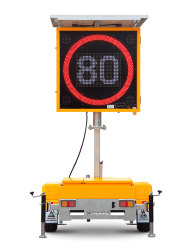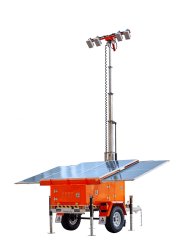
Introduction to Variable Message Signs and Their Role in Urban Planning
Variable Message Signs (VMS) play a crucial role in modern urban planning, offering valuable functions that contribute to enhancing traffic management and improving public safety. Understanding the definition and basic functions of VMS, as well as their importance in modern urban areas, is essential for comprehending their impact on urban planning.
Understanding Variable Message Signs
Definition and Basic Functions
VMS, also known as dynamic message signs or electronic traffic signs, are electronic displays used to convey real-time information to motorists. These signs are strategically placed along roadways and highways to provide drivers with important updates regarding traffic conditions, travel times, detours, special events, weather advisories, and other relevant road conditions. By utilizing VMS, urban planners can effectively communicate critical information to drivers, thereby influencing their route choices and overall travel experience.
Improving Public Safety and Information Dissemination
In today’s rapidly evolving urban landscapes, VMS have become indispensable tools for managing traffic flow and ensuring public safety. The versatility and capabilities of VMS-A in urban environments have been extensively documented through various case studies and research initiatives. For instance, positive driver responses were measured for all diversions ranging from 2% to 30%, demonstrating the significant impact of VMS on guiding traffic within urban networks (urban planning). Furthermore, AI-powered systems integrated with VMS technology can monitor real-time traffic conditions and predict traffic patterns in bustling urban settings.
The Intersection of Variable Message Signs and Urban Planning
Enhancing Traffic Management
The integration of VMS into urban planning strategies presents an opportunity to enhance traffic management by providing real-time updates on congestion levels, accidents, construction activities, and alternative routes. Research focusing on the use of VMSs in the urban network of Southampton revealed that substantial benefits were potentially attainable when diversionary routes had sufficient spare capacity (urban planning).
Improving Public Safety and Information Dissemination
In addition to managing traffic flow, VMS contribute significantly to improving public safety by disseminating critical information related to accident prevention measures, weather-related warnings, emergency alerts, and route suggestions. The impact of Bus Rapid Transit (BRT) systems in cities like Bogota has demonstrated a decrease in average travel time by 32%, highlighting the pivotal role played by advanced technology such as VMS in optimizing transportation infrastructure within urban areas.
By understanding the fundamental aspects of variable message signs and their intersection with urban planning objectives, it becomes evident that these dynamic tools hold immense potential for shaping the future of mobility within cities.
The Evolution of Variable Message Signs in Urban Environments
The evolution of variable message signs (VMS) in urban environments has been marked by a transition from simple notifications to the development of complex systems that integrate with advanced technologies and urban planning strategies. This progression has significantly impacted urban mobility, emergency management, and public information dissemination.
From Simple Notifications to Complex Systems
Early Beginnings and Technological Advancements
The early deployment of VMS primarily focused on conveying basic traffic information such as travel times and road conditions. Over time, technological advancements have transformed these signs into dynamic displays capable of providing real-time updates on traffic flow, weather conditions, and emergency alerts. The versatility of VMS-A in urban environments has been proven through its messaging power for emergencies, festivals, and events, showcasing its adaptability to diverse urban settings.
Integration with Traffic and Weather Monitoring
One notable aspect of the evolution of VMS is their integration with advanced traffic and weather monitoring systems. These integrations have enabled VMS to provide comprehensive information to motorists, including real-time traffic updates, weather advisories, and alternative route suggestions. The use of VMSs in the urban network has led to investigations into the limits of the benefits provided by VMS in an urban setting, highlighting their potential for optimizing traffic flow within cities.
Case Studies: Success Stories Around the World
Examples of Effective VMS Implementation
Several cities worldwide have demonstrated successful implementation of VMS in their urban landscapes. For instance, the introduction of technologies like the Metropolitan Integral Transit System (ISMT) and Bus Rapid Transit (BRT) system in urban areas has showcased the positive impact of advanced technologies on transportation decarbonization. These case studies serve as valuable examples for urban planners looking to leverage VMS technology to enhance mobility and sustainability within their cities.
Lessons Learned and Best Practices
Through these case studies, valuable lessons have been learned regarding the effective deployment of VMS in urban environments. The assessment of advanced technologies on energy, emissions, cost, mobility, and equity in urban areas has provided insights into best practices for integrating VMS into broader urban planning strategies. These lessons serve as guiding principles for future implementations aimed at maximizing the benefits offered by variable message signs while addressing specific challenges unique to each city’s infrastructure.
By examining the historical progression and global success stories surrounding variable message signs’ integration into urban environments, it becomes evident that these dynamic tools continue to play a pivotal role in shaping modern cities’ transportation infrastructure.
How Variable Message Signs Enhance Urban Mobility
Variable Message Signs (VMS) play a pivotal role in enhancing urban mobility by providing real-time traffic information and route suggestions, as well as safety and emergency alerts. The integration of VMS into urban planning strategies has demonstrated significant improvements in traffic flow, congestion reduction, and proactive safety measures.
Real-time Traffic Information and Route Suggestions
VMS technology enables the dissemination of real-time traffic information to motorists, empowering them to make informed decisions about their travel routes. By providing real-time updates on congestion levels, accidents, construction activities, and alternative routes, VMS contribute to reducing congestion and delays within urban road networks. The positive impact of VMS on guiding traffic within urban networks is evident through measured diversions ranging from 2% to 30% for all locations analyzed in the urban network of Southampton. Moreover, the implementation of advanced technologies such as TransMilenio and Bus Rapid Transit (BRT) systems in cities like Bogota resulted in a substantial decrease in average travel time by 32%, showcasing the effectiveness of VMS in promoting smoother traffic flow.
In addition to reducing congestion and delays, VMS also offer route suggestions that optimize travel experiences for motorists. These route suggestions are based on real-time data analysis, weather conditions, and traffic patterns, ultimately contributing to a more efficient and seamless urban mobility experience.
Safety and Emergency Alerts
Beyond traffic management, VMS contribute significantly to enhancing public safety by providing critical information related to accident prevention measures, weather-related warnings, emergency alerts, and route suggestions during unforeseen circumstances. The implementation of Mexico City’s BRT system and electric mobility initiatives resulted in a remarkable advance in lowering pollutant concentration in the environment while achieving important economic benefits. This evidence highlights the multifaceted impact of VMS technology on safety enhancements within urban environments.
Furthermore, VMS have been instrumental in accident prevention and response by alerting drivers about potential hazards ahead or suggesting alternative routes during emergencies. By leveraging advanced technologies integrated with VMS systems, cities have witnessed improved health and safety outcomes for their communities while optimizing transportation infrastructure within urban areas.
Integrating Variable Message Signs into Urban Planning Strategies
As urban areas continue to evolve, the integration of variable message signs (VMS) into urban planning strategies has become increasingly vital. This integration requires a collaborative approach between technologists and urban planners to design for efficiency and effectiveness while future-proofing urban infrastructures with scalability, adaptability, and sustainability considerations.
Collaboration Between Technologists and Urban Planners
The collaboration between technologists and urban planners is essential for seamlessly integrating VMS into the fabric of urban environments. Urban planners play a pivotal role in shaping the built environment, considering social equity, environmental sustainability, and economic development. Their nuanced judgment and contextual understanding are irreplaceable by AI systems. By working in tandem with technologists, they can ensure that VMS installations align with the broader goals of urban planning.
In an interview with urban planners, it was emphasized that VMS should be strategically positioned to address specific traffic management challenges within cities. This collaboration involves leveraging human expertise to identify optimal locations for VMS installations based on traffic patterns, population density, and existing infrastructure. The insights from these interviews underscore the importance of human-centered decision-making in the deployment of VMS within urban landscapes.
Designing for Efficiency and Effectiveness
The design process must prioritize efficiency and effectiveness to maximize the impact of VMS on urban mobility. Urban planners are tasked with evaluating the potential benefits of VMS deployments while considering their long-term implications for traffic management and public safety. By incorporating insights from interviews with urban planners, it becomes evident that designing for efficiency involves optimizing VMS messaging to cater to diverse user needs while ensuring seamless integration with existing transportation infrastructure.
Furthermore, it is crucial to consider how VMS can contribute to social equity within urban environments. The equitable distribution of real-time traffic information through VMS can empower all segments of society to make informed travel decisions, thereby reducing disparities in access to critical transportation updates.
Addressing Challenges and Overcoming Obstacles
The deployment of VMS within urban settings presents unique challenges that require careful consideration by both technologists and urban planners. These challenges include navigating regulatory frameworks, addressing privacy concerns related to data collection for real-time updates, ensuring accessibility for individuals with disabilities, and minimizing visual clutter within densely populated areas.
An interviewee highlighted the importance of balancing technological advancements with community engagement when addressing these challenges. By involving local stakeholders in the planning process, potential obstacles can be identified early on, leading to more inclusive solutions that resonate with diverse communities.
Future-Proofing Urban Infrastructures with VMS
Future-proofing urban infrastructures involves ensuring that VMS installations are scalable, adaptable, and sustainable over time. Scalability is crucial as it allows cities to expand their use of VMS as their transportation networks grow in complexity. Moreover, adaptability enables VMS systems to evolve alongside technological advancements without requiring significant overhauls or replacements.
Sustainability considerations also play a key role in future-proofing urban infrastructures with VMS technology. By integrating energy-efficient displays powered by renewable energy sources such as solar panels or low-energy LED lighting systems, cities can reduce their environmental footprint while maximizing the longevity of VMS installations.
The Future of Variable Message Signs in Urban Development
As urban development continues to evolve, the future of variable message signs (VMS) holds promising innovations that are poised to revolutionize urban mobility and public engagement. These advancements encompass the integration of VMS technology with smart cities and IoT, as well as the utilization of advanced data analytics for informed decision-making. Additionally, the role of public engagement and feedback in shaping policies and priorities will play a pivotal role in optimizing the effectiveness of VMS within urban environments.
Innovations on the Horizon
Smart Cities and IoT Integration
The integration of VMS into the fabric of smart cities represents a significant leap forward in urban planning and transportation management. By leveraging IoT technologies, VMS can seamlessly communicate with interconnected urban infrastructure, enabling real-time data exchange between traffic signals, public transit systems, and emergency response networks. This interconnected ecosystem empowers urban planners to orchestrate dynamic responses to changing traffic patterns, environmental conditions, and public safety concerns.
In addition to enhancing real-time communication capabilities, smart cities’ integration fosters a holistic approach to urban development by promoting sustainable transportation solutions. The deployment of VMS within smart city frameworks aligns with broader initiatives aimed at reducing carbon emissions, optimizing energy consumption, and promoting equitable access to transportation resources. As cities continue their transition towards smarter and more connected ecosystems, the role of VMS as an integral component in shaping urban mobility becomes increasingly prominent.
Advanced-Data Analytics for Improved Decision Making
The future landscape of VMS technology is intricately linked with advanced data analytics capabilities that enable urban planners to derive actionable insights from vast streams of real-time information. By harnessing big data analytics tools, cities can gain a comprehensive understanding of traffic patterns, commuter behaviors, and infrastructure performance metrics. This wealth of data empowers decision-makers to optimize traffic signal timings, identify areas prone to congestion or accidents, and proactively address emerging mobility challenges.
Moreover, predictive analytics integrated with VMS technology enables proactive intervention in mitigating potential traffic disruptions before they escalate into larger-scale issues. For instance, by analyzing historical traffic data alongside real-time inputs from VMS displays, cities can anticipate peak travel times or event-related congestion and implement preemptive measures such as adjusting signal phasing or recommending alternative routes through dynamic VMS messaging.
The Role of Public Engagement and Feedback
Enhancing User Experience
Public engagement stands at the forefront of shaping user-centric experiences facilitated by variable message signs within urban environments. As cities strive to create inclusive transportation systems that cater to diverse community needs, soliciting feedback from residents becomes instrumental in refining the functionality and relevance of VMS displays. Through targeted surveys, community forums, and digital feedback platforms, urban planners can gather valuable insights on how VMS can better serve commuters while addressing specific pain points related to navigation assistance or real-time information accessibility.
Furthermore, the bold integration of user-centered design principles into the evolution of VMS ensures that these displays are intuitive for all demographics regardless of technological proficiency levels or language preferences. By prioritizing clear visual cues, bold concise messaging, and bold and multilingual support, bold VMS can enhance user experiences across diverse populations while fostering a sense bold of inclusivity within urban mobility frameworks.
Shaping Policies and Priorities
The input gathered from public engagement initiatives serves as a cornerstone for informing policy decisions related bold to transportation infrastructure investments, bold traffic management strategies, and emergency response protocols within urban settings. By incorporating community perspectives into policy formulation processes, bold cities can align their priorities with resident needs while promoting transparency and accountability in governance structures related to transportation planning.
Moreover, bold public feedback mechanisms enable iterative improvements in how VMS disseminate critical information during emergencies, special events, or adverse weather conditions. This agile approach allows cities to adapt their messaging protocols based on real-time input from residents, ensuring that VMS remain responsive to evolving community dynamics while upholding safety standards within urban environments.
Conclusion: Reflecting on the Impact of Variable Message Signs in Urban Planning
Summarizing Key Takeaways
Throughout this comprehensive exploration of variable message signs (VMS) and their role in urban planning, several key takeaways emerge. Firstly, VMS technology has proven to be a vital tool for enhancing traffic management and improving public safety within urban environments. By providing real-time traffic information, route suggestions, and safety alerts, VMS contribute to reducing congestion, promoting smoother traffic flow, and facilitating proactive responses to emergencies.
Moreover, the evolution of VMS from simple notifications to complex systems integrated with advanced technologies has significantly impacted urban mobility. Case studies from cities worldwide have demonstrated successful VMS implementation, offering valuable lessons and best practices for future urban planning endeavors. The collaborative integration of VMS into urban planning strategies requires a human-centered approach that prioritizes efficiency, effectiveness, and sustainability considerations.
Looking ahead, the continued evolution of VMS in urban landscapes holds promising innovations such as smart cities and IoT integration. These advancements are poised to revolutionize urban mobility by fostering interconnected ecosystems that optimize transportation resources while promoting sustainable solutions. Additionally, advanced data analytics capabilities will enable informed decision-making by deriving actionable insights from vast streams of real-time information.
Looking Ahead: The Continued Evolution of VMS in Urban Landscapes
As cities continue to embrace the concept of sustainable mobility as a key factor in urban planning and development, the role of variable message signs (VMS) is set to undergo further evolution. Sustainable mobility takes into account society, the economy, and the environment by applying them in a mobility system. This approach aligns with broader initiatives aimed at reducing carbon emissions, optimizing energy consumption, and promoting equitable access to transportation resources.
The continued evolution of VMS within urban landscapes will be characterized by an emphasis on user-centric experiences facilitated by these dynamic displays. Public engagement and feedback will play a pivotal role in shaping policies and priorities related to transportation infrastructure investments, bold traffic management strategies, and emergency response protocols within urban settings.
In conclusion, the impact of variable message signs on urban planning is multifaceted, involving improvements in traffic management, public safety, and user experiences within cities. As technological advancements continue to shape the future landscape of urban mobility, VMS technology remains at the forefront of driving positive change within modern cities’ transportation infrastructure.
By reflecting on the impact of variable message signs in urban planning, it becomes evident that these dynamic tools hold immense potential for shaping the future of sustainable mobility within cities while ensuring efficient traffic management and enhanced public safety standards.



















